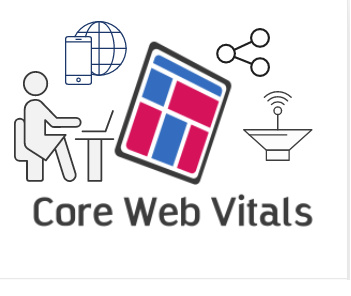Blog

Core Web Vitals Challenge: WordPress vs Other CMS
By jack123 | SEO | 1 Comments
Google started a new project called Core Web Vitals, which has the objective to measure and improve the user experience on the internet. After this initiative took off, HTTP Archive, published real-world statistics of which CMS (Content Management System), scored the best in Core Web Vitals rankings. While there was one clear victor, the performance was mixed between five of the contenders. HTTP Archive challenge matched Wrodpress versus Drupal, Joomla, Squarespace and Wix and so began the Core Web Vitals Challenge: WordPress vs Other CMS.
Core Web Vitals
What are Core Web Vitals? As I stated in the first paragraph, Core Web Vitals is a new project initiated by Google that focuses on measuring and ultimately improving the user experience on the internet. The three specific metrics that make the Core Web Vitals are:
- Largest Contentful Paint (LCP), which measures the loading performance of the site, when the main content is downloaded and when it is visible and useful to the user.
- Cumulative Layout Shift (CLS) ,is the measurement of how much a user has to wait when he clicks on an element (button, link) on the site.
- First Input Delay (FID), measures the time until the content of a website is stable enough to be interacted with.
Desktop and Mobile performance
Desktop performance was superior over the mobile performance in the majority of the cases, and that is just a reflection of the device’s render capabilities and the internet network differences between devices. These said, mobile CWV (Core Web Vitals) scores are more important than the desktop CWV scores, and that’s because most website visitors access sites using mobile devices. This is why, in May 2021, Google will be using the mobile Core Web Vitals scores as a benchmark to rank websites. While desktop scores are important and not to be ignored, the most important and critical are the mobile scores, so keep that in mind.
Explaining the scores
The scores are extracted from the number of visits of Google Chrome users, these scores are divided between desktop and mobile, and while the desktop scores are higher, the mobile ones are more important. The scores are expressing how many sites have achieved the “good” ranking in percentages. The LCP for example, 40% of websites achieved the “good” ranking.
- Largest Contentful Paint (LCP)
The top ranked CMS contender for Largest Contentful Paint, is Drupal and the lowest ranked is Wix. Drupa was the winner with 47% mobile score and that means that only 47% of the Drupal mobile websites had a good user experience.
Here are the “Largest Contentful Paint” scores:
- Drupal : 47%
- Joomla : 38%
- WordPress : 25%
- Squarespace : 12%
- Wix : 9%
- First Input Delay (FID)
The scores for First Input Delay were very high, having as champion Squarespace with 91% of sites scoring “good”, followed by WordPress with 88% while Wix was still last.
Here are the “ First Input Delay” scores:
- Squarespace : 91%
- WordPress : 88%
- Drupal : 76%
- Joomla: 71%
- Wix : 46%
- Cumulative Layout Shift (CLS)
Cumulative Layout Shift, measure how much the elements of the page shift around when you load the page, elements like buttons, forms and links. Shifting elements are not good for the user experience, it’s hard to read text while it’s shifting around the page, and it’s even harder to click on links. The1st place was taken again by Drupal with a 70% score and Wix managed to secure 3rd place beating WordPress by 2%.
Here you have the “Cumulative Layout Shift” scores:
- Drupal : 70%
- Joomla : 63%
- Wix : 59%
- WordPress : 57%
- Squarespace : 44%
Even though Drupal and Wix might have reasons to celebrate, HTTP Archive does not approve, they do not consider that 59% score is a reason to celebrate and think that these 5 contenders need to improve.
This is what HTTP Archive stated: “The top 5 CMSs could improve here. Only 50% of web pages loaded by a top 5 CMS have a “good” CLS experience, with this figure rising to 59% on mobile.
Across all CMSs the average desktop score is 59% and average mobile score is 67%. This shows us all CMSs have work to do here, but the top 5 CMSs in particular need improvement.”
The winners and the “not so winners”
Drupal took the 1st place twice while Wix took the 5th place twice. WordPress and Joomla fought ferociously in the middle, neither good nor bad.
Our top 5 contenders scored decently for First Input Delay , but they disappointed when it came to Largest Contentful Paint scores and Cumulative Layout Shift scores.
Even though Core Web Vitals is more about user experience and less about SEO and ranking in google search, they are still important. If a user has a great experience when using your website it is more likely that they will return and recommend the site to someone else, which will ultimately benefit SEO rankings as well.

I am a fan of WordPress. I love the functionality and how you can add plugins that will enhance your website further.